Where Do Kiwi Birds Live?
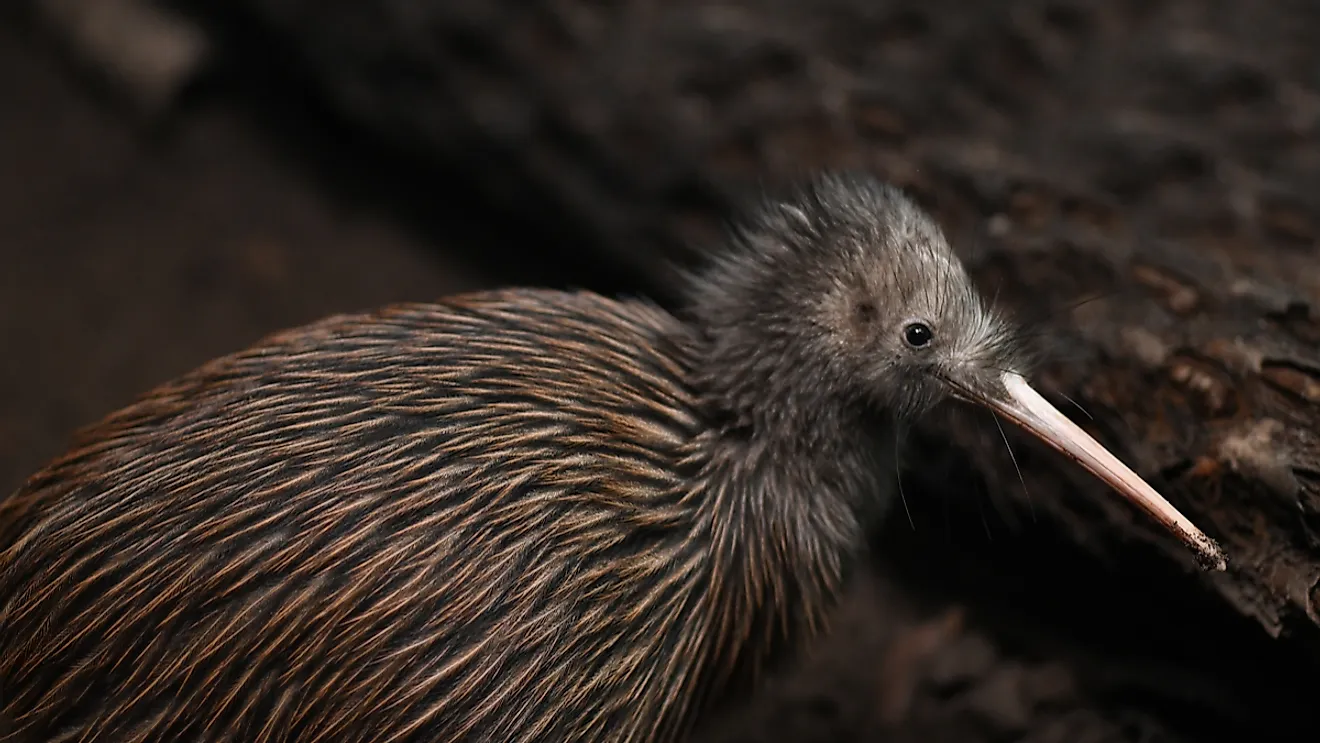
- The kiwi are native only to the country of New Zealand.
- There are five different species of kiwi.
- Kiwi are nocturnal, which means that they are generally active at night, and asleep during the day.
- The kiwi is an endangered species.
Kiwis, an icon of New Zealand, are flightless birds endemic to the country. About the size of a domestic chicken, kiwis are the smallest extant ratites (a bird group including several flightless birds like ostriches, cassowaries, emus, etc.). There are five species of kiwis, of which four species are threatened (listed as Vulnerable on the IUCN Red List) and one is near-threatened.
Where Do Kiwi Birds Live?
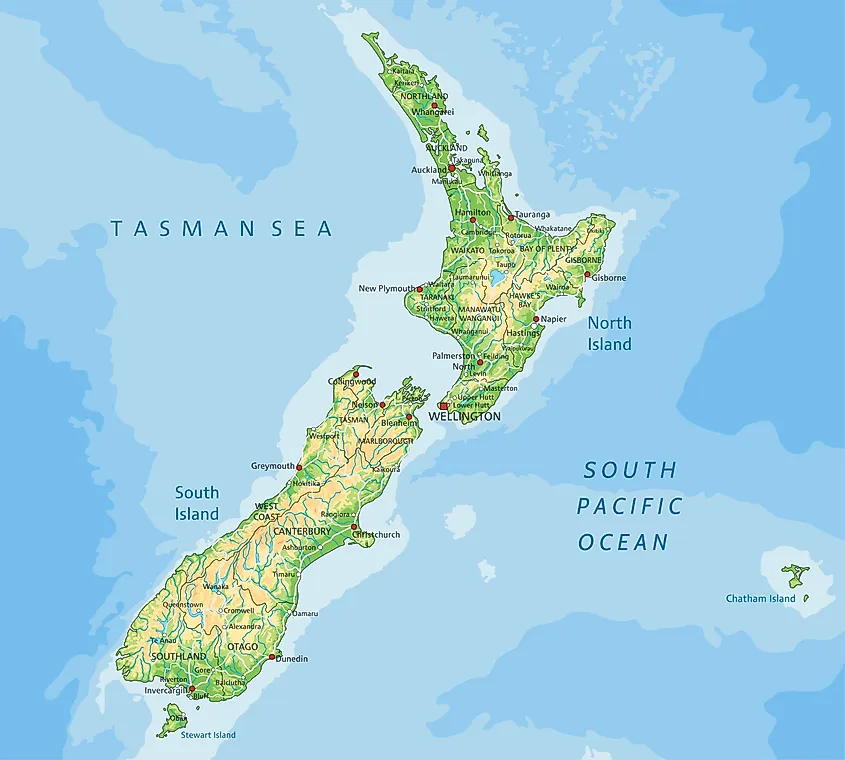
As mentioned above, wild kiwis are found only in New Zealand. In fact, New Zealanders themselves are often nicknamed kiwis. The five different kiwi species live in different parts of this island nation. The little spotted kiwi lives on some small offshore islands, and in sanctuaries established on the mainland. The great spotted kiwi can be found in the northwestern part of the South Island and around Arthur’s Pass. The North Island brown kiwi, as its name implies, lives on the North Island. The rowi, or Okarito kiwi, lives on the west coast of the South Island, and the Tokoeka kiwi lives in the southwest corner of the South Island, the Haast mountain range, and the small island of Rakiura, which lies just off the coast of the mainland South Island.
Little Spotted Kiwi
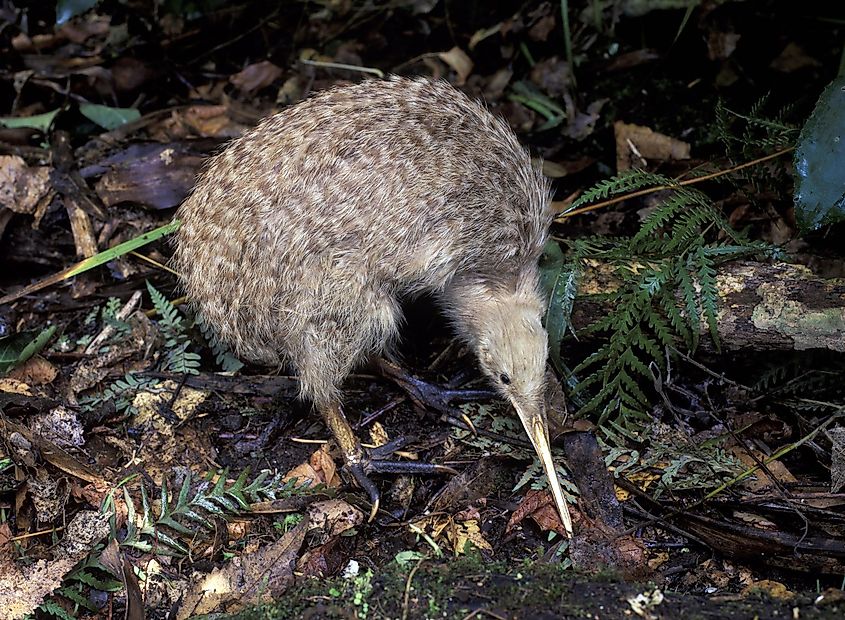
The little spotted kiwi (Apteryx owenii), also known as the kiwi pukupuku, lives on a few offshore islands, though some live in a sanctuary located in the heart of Wellington, one of New Zealand’s biggest cities. At one time, there were large populations of little spotted kiwi in the west and north of the South Island, but these populations died out around the year 1980. There was also a variety of the species living on the North Island, but they have been extinct since the late 1800s. The little spotted kiwi is the smallest of the five kiwi species. They are usually pale, light brown, white, or a combination of these colors. Their long bills are pale, as are their short legs and toes. The estimated number of little spotted kiwi is just over 1,500.
Great Spotted Kiwi
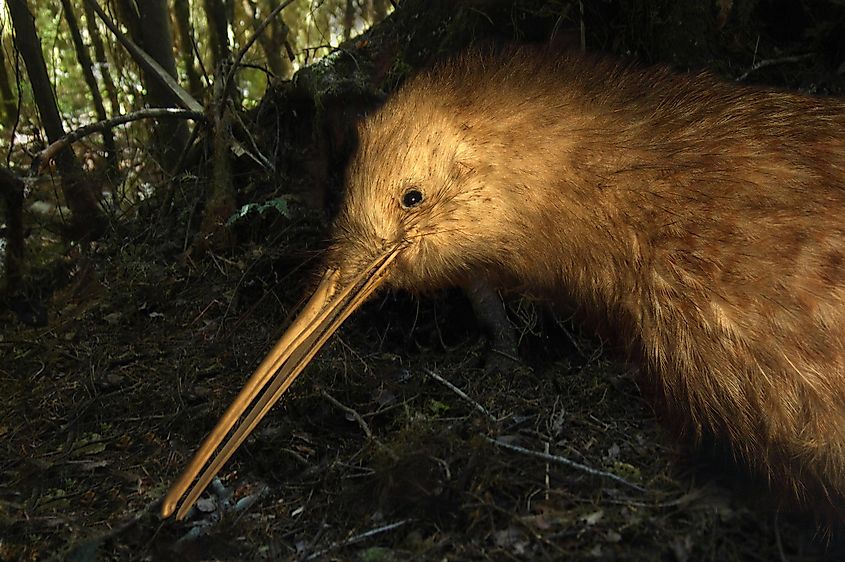
The great spotted kiwi (Apteryx haastii) is the tallest of the kiwi species, measuring 45 cm tall on average. Their natural habitat consists of regions on the northwestern part of the South Island, including Nelson, the Paparoa mountain range, and Arthur’s Pass. Although certainly larger than the little spotted kiwi, the great spotted kiwi is similar in color and physical appearance. In 2015, it was estimated that there were approximately 14,800 great spotted kiwi.
North Island Brown Kiwi
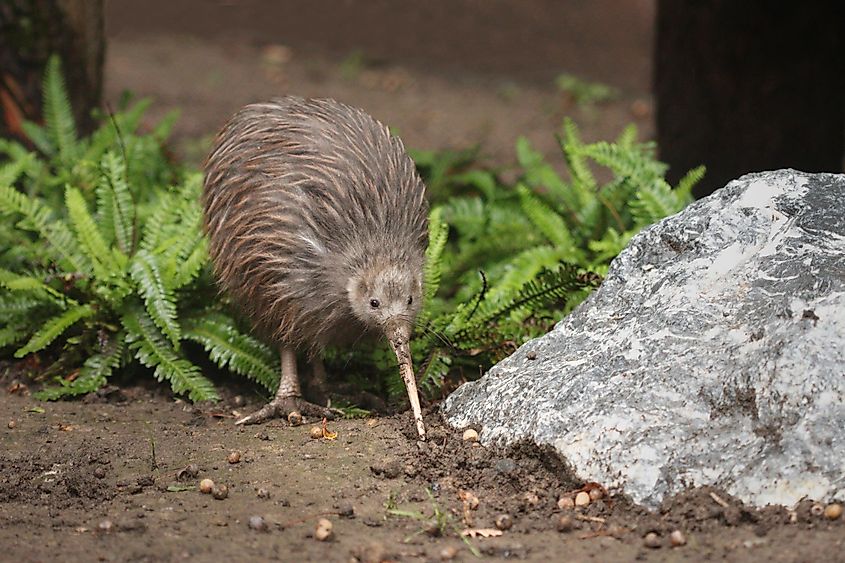
As its name implies, the North Island brown kiwi (Apteryx mantelli) is indigenous to the North Island of New Zealand. In fact, it is the only kiwi species native to the North Island. There are four varieties of this kiwi species, which are named for the four distinct regions on the North Island in which they live. These varieties are the Northland, Coromandel, Western, and Eastern. The North Island brown kiwi is distinguished by its spikey, dark brown feathers, which are streaked reddish-brown and black. This species, unlike other kiwis, can lay eggs in any month of the year, though its peak laying period occurs between the months of June and November. The total population of the North Island Brown Kiwi was estimated at 24,550 in 2015.
Rowi/Okarito Kiwi
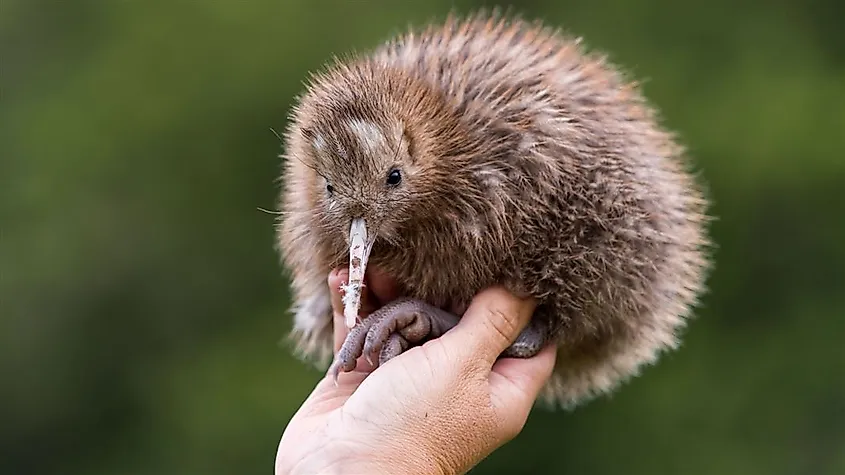
The rowi or Okarito kiwi (Apteryx rowi) lives on the South Island, specifically in a small area of forest in the immediate vicinity of the small town of Okarito, though they may also be found on some islands that do not have mammalian predators. Like the North Island brown kiwi, the rowi is brown in color, its feathers are streaked with brown and black, and it is more or less the same size. The two kiwi species also share similar breeding habits, preferring to lay eggs between the months of June and November. Unlike its northern counterpart, however, the feathers of the rowi are soft, not spikey. The rowi has the misfortune of being the most endangered kiwi species. In 2015, it was estimated that there were only 500 specimens left, though three years earlier the estimate was 375, so some progress may have been made in preserving the species.
Tokoeka Kiwi
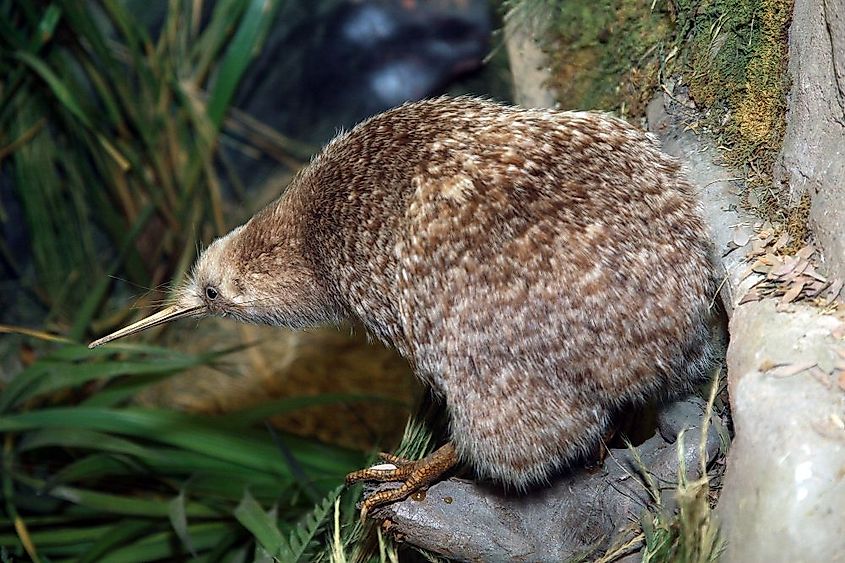
Also known as the southern brown kiwi (Apteryx australis), the Tokoeka kiwi lives on the South Island. There are three varieties of this kiwi species: the Fiordland Tokoeka, the Haast Tokoeka and the Stewart Island Tokoeka. The Stewart Island Tokoeka is unique in that it forages for food during the day, unlike the other kiwi species that are generally nocturnal. These kiwi can come in a variety of colors, from reddish to dark brown, and their feathers, like those of the rowi, are soft and streaked with brown and black. The Tokoeka kiwi is the most numerous of all the kiwi species with about 30,000 birds in 2012. Most of them, however, are of the Fiordland or Stewart Island varieties. In contrast, the estimated number of Haast Tokoeka was estimated at just 400 in 2015.
Kiwi Habitat
The kiwi is very adaptable and can live almost anywhere, including scrub, exotic plantation forests, woodlands, brushy grasslands, farmland, and even sand dunes. However, they prefer to live in dense, subtropical, or temperate forests where there is wetland vegetation, lots of underbrush, and trees that run down the edges of rivers. The cover of dense forests and underbrush helps kiwi avoid predators. Kiwi also prefer to live in areas where the soil is good and the ground is not too hard, since they get their food from the soil. Forests are also where kiwi can find hollow logs and dense vegetation that they need to make their nests.
The ideal kiwi habitat can also depend on the particular species of kiwi in question. For example, many great spotted kiwi and Tokoeka kiwi live at higher elevations. The former live in the mountain ranges known as the Southern Alps and Paparoa, while the latter live in Fiordland and the Haast mountain range. In contrast, most North Island brown kiwi live in lowland and coastal forests.
Threats To The Kiwi
200 years ago, there were millions of kiwi spread throughout New Zealand. Today, however, there are less than 68,000 specimens left, and some types of kiwi number in just the hundreds. One reason is that it is very difficult for kiwi to produce offspring. Indeed, half of the eggs laid by kiwi fail to hatch, often due to natural bacteria or the parents being disturbed by predators. And even if the eggs do hatch, 90% of the chicks that are born die within six months, many of them victims of predators. In fact, only 5% of chicks will make it to adulthood.
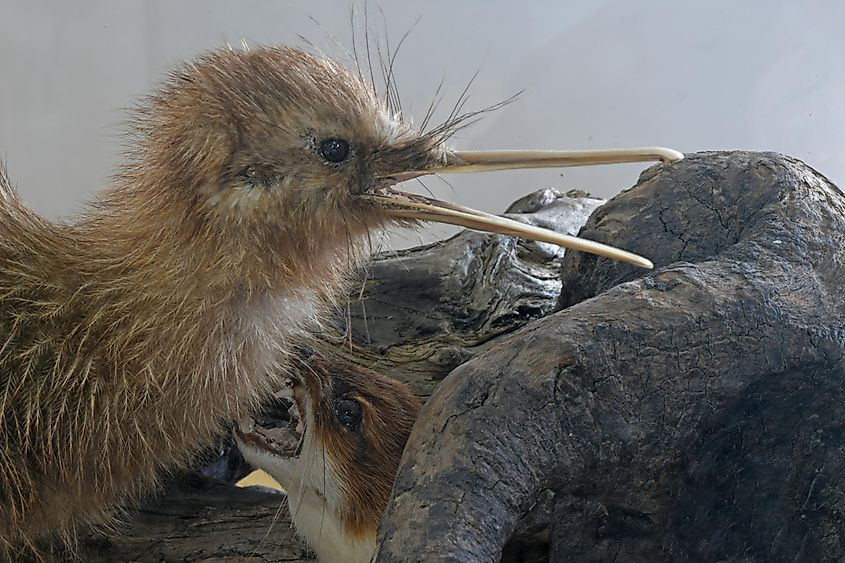
A stoat attacks a kiwi chick. Image credit: Lakeview Images/Shutterstock
But the biggest threat to the continued existence of the kiwi is human activity. As human civilization has expanded, the natural habitat of the kiwi has shrunk. In fact, 750 years ago, native forests covered 85% of New Zealand’s land area. Today, that number has shrunk to 23%. At the same time, many of the lowland forests, wetlands, dunes, estuaries that the kiwi like to call home have been turned into pasturelands or urban areas.
In addition, whenever humans engage in land clearing activities, kiwi are put in a very vulnerable position. Land clearance often means that both the kiwi and the creatures that prey on them are forced into a smaller area. Since the kiwi is very territorial, shrinking their habitat forces them into greater competition with each other, and can affect the bird’s ability to breed. Kiwi can also be killed by fire when burning is used to clear land, or by large rollers used to crush vegetation.
As if losing habitat isn’t bad enough, the kiwi also face the danger of predators introduced to New Zealand by people. At one time, there were no land-based mammalian predators in New Zealand. Now, however, the kiwi need to watch out for a number of predatory species, especially stoats, which routinely feed on kiwi chicks. Many other animals, such as ferrets, pigs, possums, hedgehogs, rodents, and weasels can also prey on kiwi, or at least compete with the birds for food and habitat. Even the cats and dogs that people keep as pets have been known to kill kiwi.
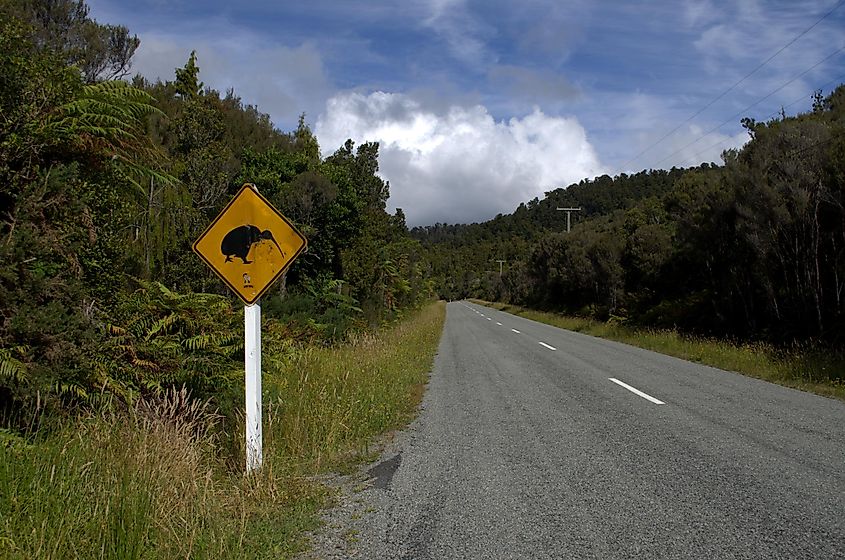
Fortunately for the kiwi, efforts are being made to protect them and prevent them from going extinct. For instance, conservationists are working to control the population of predators in places where kiwi live, leading to an increase in the birds’ hatching. There are also public awareness campaigns to teach New Zealanders what they can do in order to reduce the dangers that kiwi face. Such conservation efforts are expected to lead to an increase in the population of some kiwi species by 2030, but the birds have a long way to go before they can no longer be considered threatened.











